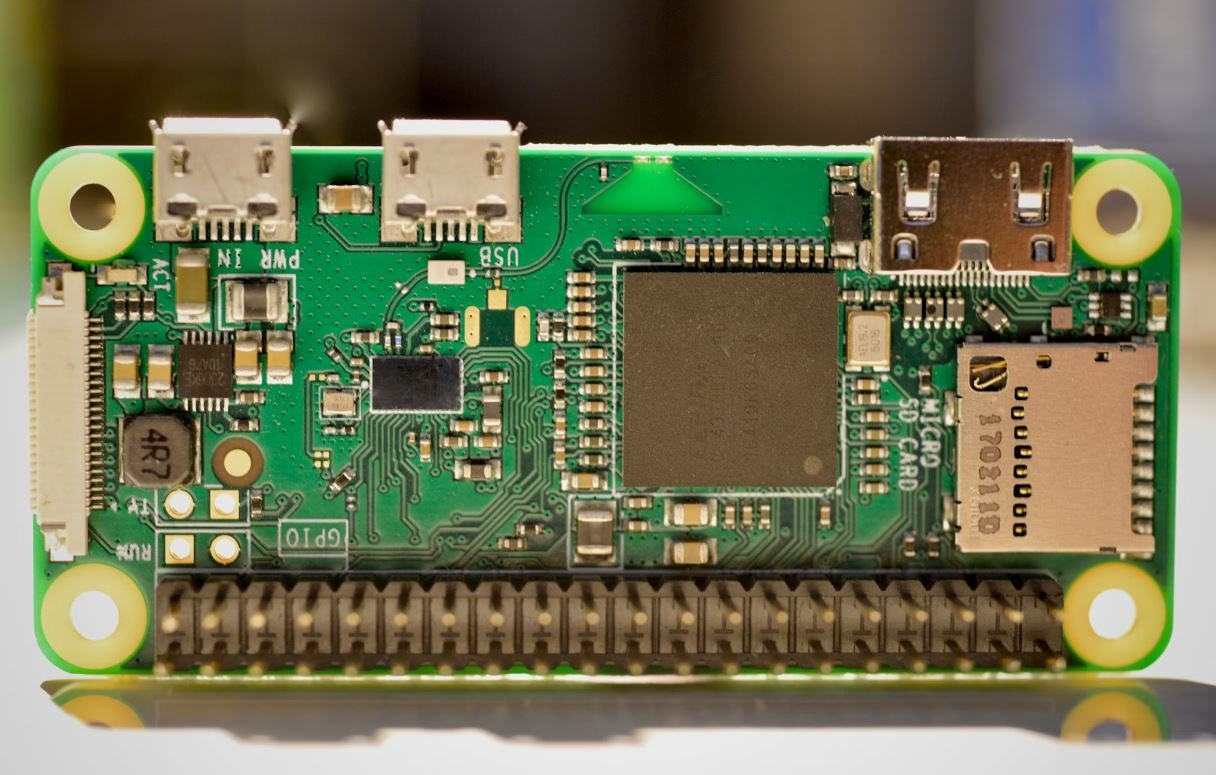ChatGPT Prompts Meaning
ChatGPT, powered by OpenAI, is an advanced language model that can generate human-like text in response to given prompts. With the ability to provide detailed and coherent responses, ChatGPT has found applications in various creative writing, content generation, and conversational systems. Let’s explore the meaning of ChatGPT prompts and how they influence the model’s output.
Key Takeaways
- ChatGPT is an advanced language model with human-like text generation capabilities.
- ChatGPT prompts provide input to the model to generate appropriate responses.
- The choice and structure of prompts influence the output of ChatGPT.
- Experimenting with prompts can help elicit desired responses from ChatGPT.
- ChatGPT prompts can be used creatively in various contexts, including content generation and conversational systems.
**ChatGPT prompts** are the input snippets provided to the model to guide its response. These prompts can range from a single sentence to a longer paragraph, depending on the desired outcome. *By carefully crafting effective prompts, users can steer the model’s responses in a specific direction, increasing relevancy and coherence.*
ChatGPT’s remarkable capability to understand and generate text enables it to interpret the given **prompts** and generate human-like responses. The model’s understanding of the context relies heavily on the information provided in the **prompts**, allowing it to generate relevant and meaningful text. *With the right prompts, users can engage in meaningful conversations with ChatGPT, utilizing its vast knowledge base to provide informative and insightful responses.*
Prompt Structure and Examples
The structure of **ChatGPT prompts** is important in shaping the model’s response. Users can experiment with different prompt structures to elicit specific types of responses. Here are a few **examples of prompt structures** that can yield interesting outcomes:
- Direct Question: Asking ChatGPT a specific question, such as “What are the implications of artificial intelligence?”
- Dialogue-Based: Setting up a dialogue by providing both user and AI prompts, e.g., User: “Tell me a joke…” AI: “Sure, here it is…”
- Contextualization: Providing relevant context before asking a question, e.g., Setting: “You are a history professor, explain the causes of World War II.”
| Prompt Type | Example |
|---|---|
| Direct Question | “What is the meaning of life?” |
| Dialogue-Based | User: “Can you write a poem?” AI: “Sure, here’s a beautiful poem for you.” |
| Contextualization | Setting: “You are a travel assistant. Plan a trip to Paris for me.” |
**Experimenting with different prompts** allows users to observe how the model reacts and generates responses accordingly. By iterating and refining prompts, users can improve the quality and relevance of the model’s output. *It’s fascinating to explore how small changes in prompt structure can lead to vastly different responses, showcasing the flexibility and adaptability of ChatGPT.*
Incorporating ChatGPT into Content Generation
ChatGPT prompts can be harnessed creatively to generate content for various purposes. By providing relevant prompts, users can rely on ChatGPT’s language capabilities to produce engaging and informative content. Here are a few ways ChatGPT prompts can be utilized in content generation:
- Blog Post Ideas: Asking ChatGPT for topic suggestions or outlines for blog posts.
- Storyline Generation: Exploring various character prompts to brainstorm ideas for a story or screenplay.
- Marketing Copy: Crafting prompts to generate compelling ad or product descriptions.
| Prompt Usage | Example |
|---|---|
| Blog Post Ideas | “Suggest ideas for a blog post about healthy eating.” |
| Storyline Generation | “Help me come up with a story prompt involving a detective.” |
| Marketing Copy | “Write an engaging product description for a new smartphone.” |
**Incorporating ChatGPT prompts** into content generation workflows offers a fresh perspective and valuable insights. By leveraging the model’s ability to understand prompts and generate coherent text, users can enhance their creative process and explore new ideas with ease. *ChatGPT becomes a valuable assistant, enriching content generation efforts by providing unique prompts and creative inspiration.*
Building Conversational Systems with ChatGPT
ChatGPT prompts also play a significant role in the development of conversational AI systems. By providing appropriate prompts, developers can ensure ChatGPT produces relevant and engaging responses in conversation-like interactions. Here are a few aspects of conversational systems that prompts influence:
- Tone and Style: Crafting prompts to align with a specific tone or style of communication.
- Domain-Specific Context: Incorporating prompts that establish the context and guide the model’s response within a specific domain.
- User Interaction: Utilizing prompts to simulate the user’s part of the conversation, stimulating a more natural chat experience.
| Prompt Usage | Example |
|---|---|
| Tone and Style | “Generate a response with a formal tone.” |
| Domain-Specific Context | “You are an IT support agent. Help the user troubleshoot a network issue.” |
| User Interaction | “Roleplay as a customer and respond as the AI agent.” |
**ChatGPT prompts** form the foundation of conversational systems, allowing developers to shape the model’s behavior and response style. By designing prompts carefully, developers can create intuitive and engaging chatbot experiences that integrate seamlessly with various user interactions and contexts. *ChatGPT’s adaptability to different prompts enables the creation of conversational systems that feel natural and responsive to user input.*
ChatGPT’s ability to generate human-like text, influenced by the **prompt input**, opens up exciting possibilities in creative writing, content generation, and conversational AI. With effective prompt usage, users can navigate the vast knowledge and language capabilities of ChatGPT to unlock countless opportunities for productivity, creativity, and innovation.

Common Misconceptions
Misconception: ChatGPT fully understands meaning in prompts
ChatGPT may provide impressive responses, but it does not truly comprehend the meaning behind prompts. It lacks true understanding of context, nuance, or real-world knowledge. People often assume it understands, but it primarily relies on statistical patterns learned from training data.
- ChatGPT relies on pre-existing text patterns in its training data
- It may give coherent responses without understanding their real meaning
- Limited knowledge of context and inability to pass comprehension tests
Misconception: ChatGPT generates original content
While ChatGPT can generate text, it is not inherently creative or capable of true originality. Its responses are a combination of regurgitation from training data and pattern completion. The model can’t independently create knowledge, but rather simulates existing patterns and structures.
- Responses are based on existing data patterns
- No creative ideas or independent generation of knowledge
- Pattern completion rather than genuine creativity
Misconception: ChatGPT is an unbiased source of information
ChatGPT’s responses reflect biases from its training data. It is trained on internet text, which often contains biases and inaccuracies. While efforts are made to reduce biases, the model may still exhibit biased behavior due to the nature of its training data.
- Training data often contains biases
- Efforts to reduce biases may not completely eliminate them
- Responses may inadvertently perpetuate bias or inaccuracies
Misconception: ChatGPT is infallible and never makes mistakes
ChatGPT is prone to making errors, both factual and logical. It can generate plausible-sounding but incorrect or nonsensical responses. While it aims to be helpful, it doesn’t have a mechanism for verifying the truth or accuracy of its outputs.
- Possible to generate incorrect or nonsensical responses
- No built-in mechanism to verify accuracy or correctness
- Potential for factual or logical errors in generated content
Misconception: ChatGPT possesses common sense and practical knowledge
Despite its impressive capabilities, ChatGPT lacks common sense reasoning and practical knowledge. It often gives answers that may sound plausible but aren’t grounded in reality. It does not possess real-world experience or true understanding beyond what is present in its training data.
- Lacks common sense reasoning outside of its training data
- May provide plausible but not necessarily practical or accurate answers
- No real-world experience or practical understanding

ChatGPT Prompts Meaning
ChatGPT is an advanced language model developed by OpenAI that has the ability to generate human-like text in response to prompts. It has been trained on a vast amount of data, enabling it to understand and generate text in a wide range of topics. The prompts used to engage with ChatGPT play a crucial role in shaping the generated output. By understanding and utilizing the meaning behind prompts, users can achieve more accurate and satisfying results. In this article, we present ten fascinating tables showcasing different elements of ChatGPT prompts and their significance.
Example Prompts and Output
This table demonstrates the variation in output generated by ChatGPT when given different example prompts. It highlights the importance of choosing the right words and context in order to get desired results.
| Prompt | Output |
|---|---|
| “Tell me a joke.” | “Why don’t scientists trust atoms? Because they make up everything!” |
| “Share a funny story.” | “Once I accidentally switched my twin brother’s sugar with salt. His reaction was priceless!” |
Effect of Prompt Length
This table illustrates how the length of a prompt can influence the complexity and comprehensiveness of the generated text. Longer prompts tend to provide a more detailed context for ChatGPT to generate a response.
| Prompt | Output |
|---|---|
| “What is the capital of France?” | “Paris is the capital and most populous city of France. It is located on the River Seine, in the north of the country.” |
| “Can you please tell me the capital of France?” | “Certainly! The capital of France is Paris. It is a major global city and a center for art, fashion, and culture.” |
Impact of Specific Keywords
This table showcases how the use of specific keywords in prompts can influence the generated output, focusing on the impact of synonyms and related terms.
| Prompt | Output |
|---|---|
| “Benefits of exercise” | “Regular exercise offers countless advantages, including improved cardiovascular health, increased energy levels, and enhanced mental well-being.” |
| “Advantages of physical activity” | “Engaging in physical activity has numerous benefits such as better heart health, increased stamina, and improved mental clarity.” |
Different Topic Exploration
This table illustrates how changing the topic of the prompt can lead to diverse and intriguing responses from ChatGPT.
| Prompt | Output |
|---|---|
| “Tell me about quantum physics.” | “Quantum physics, also known as quantum mechanics, is a fundamental theory in physics that describes the behavior and interactions of subatomic particles.” |
| “Explain string theory to me.” | “String theory is a theoretical framework in physics that suggests all particles are made up of tiny, vibrating strings, which exist in a multi-dimensional universe.” |
Effect of Tone and Emotion
This table showcases how the tone and emotion expressed in a prompt can shape the sentiment and attitude of the generated response.
| Prompt | Output |
|---|---|
| “Describe a beautiful sunset.” | “As the sun dipped below the horizon, painting the sky with hues of orange and pink, it was a breathtakingly beautiful sight that filled my heart with joy.” |
| “Depict a gloomy evening.” | “Under a dark and overcast sky, the evening held a melancholic aura, casting a shadow over the surroundings and leaving a sense of sadness in the air.” |
Influence of Historical References
This table demonstrates how incorporating historical references in prompts can spark intriguing and informative responses from ChatGPT.
| Prompt | Output |
|---|---|
| “Tell me about the Renaissance.” | “The Renaissance was a period in European history, spanning from the 14th to the 17th century, characterized by a renewed interest in art, science, and humanism.” |
| “Explain the impact of the Industrial Revolution.” | “The Industrial Revolution, occurring in the 18th and 19th centuries, brought about significant transformations in manufacturing, agriculture, and societal structures.” |
Exploration of Imaginary Scenarios
This table highlights the ability of ChatGPT to engage with and generate responses related to fictional or hypothetical scenarios.
| Prompt | Output |
|---|---|
| “What if humans could fly?” | “If humans had the ability to fly, the world would be a completely different place. We would be free to explore the skies, bypassing traffic and enjoying a new perspective on the world.” |
| “Imagine a world without technology.” | “In a world devoid of technology, our daily lives would be radically different. We would rely on manual labor, traditional communication methods, and face the challenges of a more primitive existence.” |
Role of Contextual Prompts
This table emphasizes the importance of providing context in prompts to guide ChatGPT’s generated responses, leading to more relevant and accurate information.
| Prompt | Output |
|---|---|
| “Is climate change real?” | “Yes, climate change is a scientifically proven phenomenon that relates to long-term variations in temperature and weather patterns on Earth due to human activities and natural factors.” |
| “Discuss the impact of climate change.” | “Climate change has significant consequences, such as rising global temperatures, changing ecosystems, extreme weather events, and negative impacts on human health and economies.” |
Exploration of Ethical Questions
This table highlights ChatGPT‘s ability to engage with moral and ethical questions, providing diverse perspectives on complex issues.
| Prompt | Output |
|---|---|
| “Is it ever justified to break the law?” | “While laws provide structure and order, there may be exceptional circumstances where breaking the law is morally justified, such as in cases of civil disobedience to support a just cause.” |
| “Should privacy be sacrificed for enhanced security?” | “The balance between privacy and security is a delicate one. While enhanced security measures can contribute to public safety, it is crucial to carefully consider and protect individuals’ privacy rights.” |
Conclusion
In this article, we explored the fascinating world of ChatGPT prompts and their impact on the generated output. Tables presented various aspects of prompt design, such as the choice of words, length, tone, historical references, and contextual information. By understanding and utilizing these elements effectively, users can maximize the potential of ChatGPT to generate accurate, informative, and engaging text. With its ability to comprehend and respond to a wide range of prompts, ChatGPT opens doors to new possibilities in natural language processing and human-computer interaction.
Frequently Asked Questions
How does ChatGPT generate prompts?
How does ChatGPT generate prompts?
ChatGPT generates prompts by utilizing machine learning models and natural language processing techniques. It is trained on a vast corpus of text data and can generate coherent responses based on the given input.
What is the purpose of ChatGPT?
What is the purpose of ChatGPT?
The purpose of ChatGPT is to provide an interactive conversational experience. It can assist with generating text, answering questions, offering suggestions, and engaging in conversations in a human-like manner.
How can I improve the quality of responses from ChatGPT?
How can I improve the quality of responses from ChatGPT?
To improve the quality of responses from ChatGPT, you can provide more context, ask specific questions, and experiment with different prompts. Additionally, you can use system-level instructions to guide its behavior and encourage desired responses.
What are the limitations of ChatGPT?
What are the limitations of ChatGPT?
ChatGPT has some limitations. It may generate plausible-sounding but incorrect or nonsensical responses. It can be sensitive to small changes in input phrasing and may exhibit biased behavior or respond to harmful instructions. It is not capable of personal opinions, memories, or subjective experiences.
Can ChatGPT be used for commercial purposes?
Can ChatGPT be used for commercial purposes?
Yes, ChatGPT can be used for commercial purposes. OpenAI provides an API that allows developers to integrate ChatGPT into their applications or services for commercial use. However, specific terms and conditions may apply, so it’s advisable to consult with OpenAI regarding commercial usage.
Can ChatGPT understand and generate code?
Can ChatGPT understand and generate code?
ChatGPT has some capability to understand and generate code. While it has been trained on a wide range of text data, including programming-related content, its code-generation abilities may be limited. It’s important to note that ChatGPT is primarily designed for generating human-like text responses rather than writing complex programs.
Is ChatGPT suitable for sensitive or confidential information?
Is ChatGPT suitable for sensitive or confidential information?
It is not recommended to use ChatGPT for sensitive or confidential information. As an AI language model, ChatGPT does not have a memory retention meaning it doesn’t store any information from prior interactions. However, there is some inherent risk associated with sharing sensitive or private data, so caution should be exercised while using ChatGPT in such scenarios.
How can biases in ChatGPT be addressed?
How can biases in ChatGPT be addressed?
OpenAI is actively working on reducing biases in ChatGPT. They employ extensive research and engineering to mitigate biases and improve the system’s behavior. User feedback and community involvement play a crucial role in identifying and addressing biases effectively.
Can I retrain ChatGPT with my own dataset?
Can I retrain ChatGPT with my own dataset?
At the moment, OpenAI does not provide a public method for retraining ChatGPT with custom datasets. However, they continually update their models and explore different avenues for user customization. It is advisable to refer to OpenAI’s official documentation and announcements for any updates regarding retraining capabilities.
What happens if ChatGPT encounters a question it cannot answer?
What happens if ChatGPT encounters a question it cannot answer?
If ChatGPT encounters a question it cannot answer, it will try its best to generate a response based on the available knowledge it has been trained on. However, there is a possibility that the generated response may not be accurate or satisfactory. In such cases, it’s recommended to ask a different question or seek information from reliable sources.




